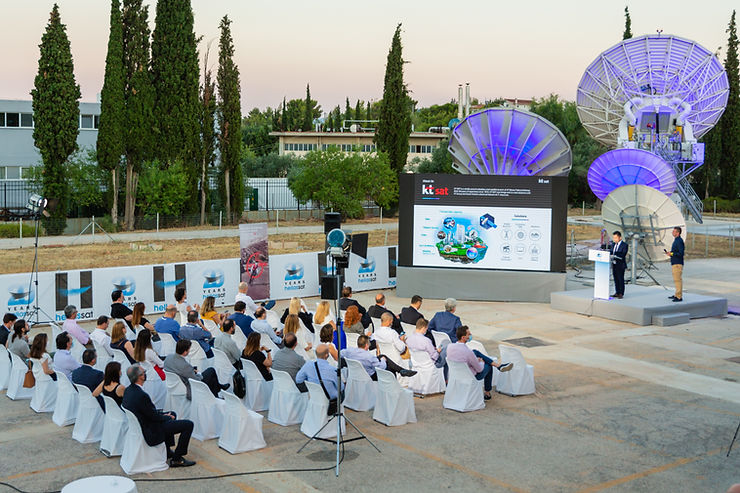Hellas Sat has successfully completed a live demonstration of the provision of 5G network to remote areas by backhauling the connection between a 5G Core Network and a 5G gNB through Hellas Sat 3, a geostationary telecommunication satellite, which was built by Thales Alenia Space on the Spacebus 4000 C4 platform.
The demonstration took place during an event that marked Hellas Sat 20-year anniversary, that was organised in partnership with KT-SAT, ST Engineering iDirect, Thales Alenia Space, and Vodafone Greece to showcase the satellites’ role in the 5G ecosystem to broaden coverage.
Using satellite communication backhaul links
Using satellite communication backhaul links, the satellite was fully integrated into the 5G network and received 5G transmissions from the Earth and then delivered these to remote areas.
This technology enables increased coverage in areas where traditional backhauling technologies (wired, fiber, radio beams) are not suitable for technical and/or economic reasons.
The connection of the Hellas Sat 3 satellite to the 5G network has been enabled by the use of Thales Alenia Space and ST Engineering iDirect hub and modem equipment, as well as Vodafone’s 5G licensed spectrum.
Specifically, Vodafone Greece provided bands from its 5G spectrum in 2100 MHz and 3600 MHz frequency zones which support the roll-out of its 5G network in Greece, bringing new possibilities to citizens and businesses, through Gigabit speeds and lower latency.
The world’s first router for hybrid satellite-terrestrial 5G transmission developed by KT-SAT, was also showcased at the event.
During the showcase, 5G terminals were connected to the router to simultaneously transmit and receive various types of data, or utilized separate routes, to and from a 5G network and a satellite.
The terminals successfully maintained normal service operations with the Hellas Sat satellite connectivity, even after the 5G network was intentionally disconnected.
Successful hybrid-terrestrial-satellite 5G transmission
The successful hybrid-terrestrial-satellite 5G transmission showed how this technology can enable 5G-based automated machinery or moving vehicles to maintain its network connection when 5G coverage becomes unavailable, or a natural disaster has occurred.
“With the completion of 20 years of operations, Hellas Sat is exploring the new era of 5G communications providing satellite connectivity solutions to rural areas.”
Christodoulos Protopapas, CEO of Hellas Sat.
We are pleased to be part of this event and demonstrate Hybrid solution to share our view towards a new era of telecommunication by satellite and 5G. This will be a great start of our partnership with Hellas Sat and all members of KT SAT hope to bring more discussions and opportunities together in near future to develop innovative satellite solutions.”Mike Jeong, Senior Director of KT SAT’s Marketing and Sales.

About KT Sat
Since the establishment of Kumsan Satellite Service Center in 1970, KT SAT(wholly owned by KT) has been leading Korea’s broadcasting and telecommunication industry in Asia as the Korea’s sole satellite communication operator. Having total of 5 satellites, KT SAT provides user-customized services and global satellite coverage over the Asia, Middle East and Africa.



